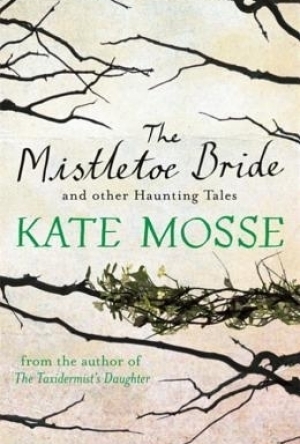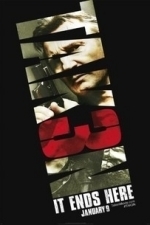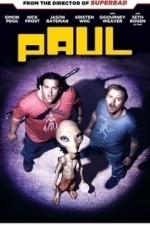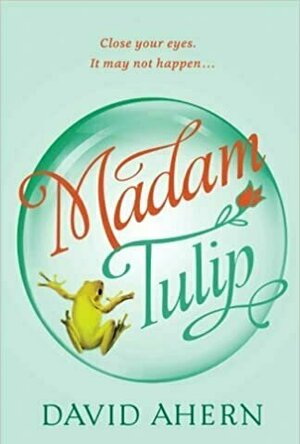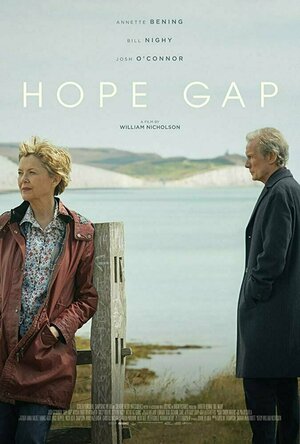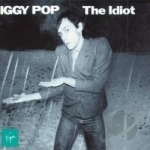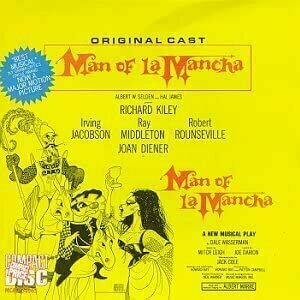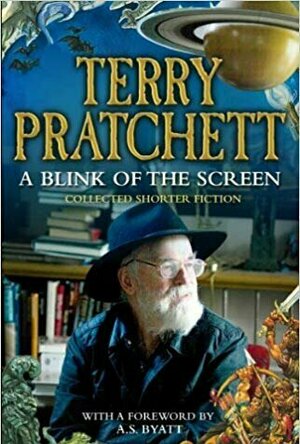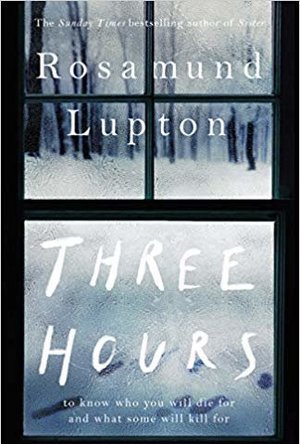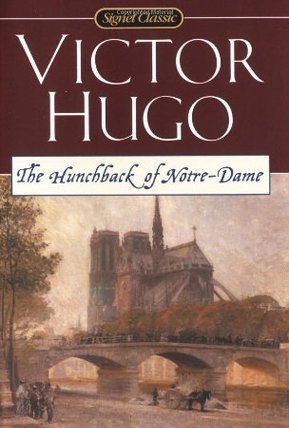Search
Search results
Louise (64 KP) rated The Mistletoe Bride and Other Haunting Tales in Books
Jul 2, 2018
I am not going to ramble on and on giving you a synopsis for all the stories but I will let you know some of the ones that I enjoyed the most out of this collection. I really wanted to start reading some more short stories so I have continuously made an effort in reading a collection per month. With each book there are obviously going to be some better than others. I think the hardest thing for the authors is to create a really good and atmospheric story that will truly grip you and Kate Mosse has certainly done that in some of these stories. Others were a bit weak and easily forgettable.
The stories included are:
The Mistletoe Bride – 4/5 stars
Duet – 3.5/5 stars
Red Letter day – 2.5/5 stars
The drowned village – 3/5 stars
The house on the hill – 3/5 stars
Why the yew tree lives so long -1.5/5stars
Sainte-Therese – 3/5 stars
The ship of the dead -4/5 stars
La Fille de Melisande -2/5 stars
The revenant -5/5 star – FAVOURITE
On Harting hill -3.5/5 stars
The princess Alice -3/5 stars
In the Theatre at night 2.5/5 stars
The yellow scarf -3.5/5 stars
Syrinx 1/5 stars
Each of these stories comes with an authors note as what inspired her to write them. There are also some black and white gothic illustrations before each of the stories drawn by Rohan Daniel Eason which sets the tone. The stories are set in Sussex, Brittany and Languedoc that are based on Folk tales ranging from the 1800’s to the present day.
I will admit as writing this review I had to check the stories again to see which ones were which as they are somewhat forgettable. The ones that have clearly stuck with me is ‘The Mistletoe Bride’, ‘Duet’ and ‘The Revenant’.
The revenant was the best story by far in the book, it was eerie and creepy and had me on the edge of my seat with my pulse racing as I was actually scared but couldn’t stop reading. It is probably one of the scariest short stories that I have read! Mosse manages to create an intense atmosphere and completely grips the reader. The writing style is very easy to read and flows beautifully.
I would recommend this to people who are looking to read some short-stories that have historical fiction with supernatural elements and a bit of horror.
Overall I rated this 3.5/5 stars
The stories included are:
The Mistletoe Bride – 4/5 stars
Duet – 3.5/5 stars
Red Letter day – 2.5/5 stars
The drowned village – 3/5 stars
The house on the hill – 3/5 stars
Why the yew tree lives so long -1.5/5stars
Sainte-Therese – 3/5 stars
The ship of the dead -4/5 stars
La Fille de Melisande -2/5 stars
The revenant -5/5 star – FAVOURITE
On Harting hill -3.5/5 stars
The princess Alice -3/5 stars
In the Theatre at night 2.5/5 stars
The yellow scarf -3.5/5 stars
Syrinx 1/5 stars
Each of these stories comes with an authors note as what inspired her to write them. There are also some black and white gothic illustrations before each of the stories drawn by Rohan Daniel Eason which sets the tone. The stories are set in Sussex, Brittany and Languedoc that are based on Folk tales ranging from the 1800’s to the present day.
I will admit as writing this review I had to check the stories again to see which ones were which as they are somewhat forgettable. The ones that have clearly stuck with me is ‘The Mistletoe Bride’, ‘Duet’ and ‘The Revenant’.
The revenant was the best story by far in the book, it was eerie and creepy and had me on the edge of my seat with my pulse racing as I was actually scared but couldn’t stop reading. It is probably one of the scariest short stories that I have read! Mosse manages to create an intense atmosphere and completely grips the reader. The writing style is very easy to read and flows beautifully.
I would recommend this to people who are looking to read some short-stories that have historical fiction with supernatural elements and a bit of horror.
Overall I rated this 3.5/5 stars
Gareth von Kallenbach (980 KP) rated Taken 3 (2015) in Movies
Aug 6, 2019
Liam Neeson may be an actor, an actor with a “particular set of skills,” some of
which entertain audiences around the world with action packed thrills on the big
screen. Was he able to do it again in his latest film Taken 3?
The film centers around Bryan Mill’s (Neeson) ex wife Lenore (Famke Janssen) and
her relationship problems with Stuart (Dougray Scott). She seeks comfort in Mills
and though he remains in love with Lenore, he would rather she figure things out
in her marriage before anything happens between them. Stuart begins to be
suspicious of the relationship between the two and decides to ask Mills to stay
away from Lenore while they work things out. Mills receives a text the following
day asking him to meet her at his place for a shoulder tho cry on. Unfortunately
upon arriving with breakfast, he discovers her lifeless body in his bed. Before
he had a moment to take everything in, the police barge in and try to arrest him
for the murder. In true Mill’s fashion, he is able to escape though only steps
behind is inspector Dotzler (Forest Whitaker) who is trying to piece together
every clue that seemingly points away from Bryan Mills as the culprit. Let us not
forget about his daughter Kim (Maggie Grace) who was the victim in the first film
and might just be in this film.
My expectations weren’t high for this installment of Taken. Some may agree with me
that as with most films that spawn sequels, the first film is usually the best. As
a huge fan of the first Taken I knew that the third one, just like the second one
would be worth seeing at least once but that would probably it. This film had far
less action than its predecessors which is a little strange if you ask me. Now
don’t get me wrong, Liam Neesen is an amazing actor in this genre however
sometimes that really isn’t enough. An actor can only do so much with what they
are given. In his case it might have been the script. The editing was a bit choppy
and the cinematography a bit sloppy.
In the case of this film, I would’ve expected a little bit more. I think it would
be wise to leave this film as the last and final one. I think that they have
milked this cow dry. As I have stated above, this film is worth seeing at least
once although you may want to leave it up to redbox and skip theatre prices.
which entertain audiences around the world with action packed thrills on the big
screen. Was he able to do it again in his latest film Taken 3?
The film centers around Bryan Mill’s (Neeson) ex wife Lenore (Famke Janssen) and
her relationship problems with Stuart (Dougray Scott). She seeks comfort in Mills
and though he remains in love with Lenore, he would rather she figure things out
in her marriage before anything happens between them. Stuart begins to be
suspicious of the relationship between the two and decides to ask Mills to stay
away from Lenore while they work things out. Mills receives a text the following
day asking him to meet her at his place for a shoulder tho cry on. Unfortunately
upon arriving with breakfast, he discovers her lifeless body in his bed. Before
he had a moment to take everything in, the police barge in and try to arrest him
for the murder. In true Mill’s fashion, he is able to escape though only steps
behind is inspector Dotzler (Forest Whitaker) who is trying to piece together
every clue that seemingly points away from Bryan Mills as the culprit. Let us not
forget about his daughter Kim (Maggie Grace) who was the victim in the first film
and might just be in this film.
My expectations weren’t high for this installment of Taken. Some may agree with me
that as with most films that spawn sequels, the first film is usually the best. As
a huge fan of the first Taken I knew that the third one, just like the second one
would be worth seeing at least once but that would probably it. This film had far
less action than its predecessors which is a little strange if you ask me. Now
don’t get me wrong, Liam Neesen is an amazing actor in this genre however
sometimes that really isn’t enough. An actor can only do so much with what they
are given. In his case it might have been the script. The editing was a bit choppy
and the cinematography a bit sloppy.
In the case of this film, I would’ve expected a little bit more. I think it would
be wise to leave this film as the last and final one. I think that they have
milked this cow dry. As I have stated above, this film is worth seeing at least
once although you may want to leave it up to redbox and skip theatre prices.
Gareth von Kallenbach (980 KP) rated Paul (2011) in Movies
Aug 7, 2019
Can you think of a better vacation than going to the San Diego Comic-Con, then hopping into an RV with your best friend to travel around America checking out various UFO hot spots? If you answered “Heck No!” then you would get along just fine with Klingon-speaking best friends from the UK, Graeme Willy (Simon Pegg) and Clive Gollings (Nick Frost).
That’s how the movie Paul begins, at one of the greatest conventions, San Diego Comic Con. Then Graeme and Clive are off on their cross country adventure during which they meet all sorts of interesting people including Paul (voiced by Seth Rogen), an alien whose ship crash landed on Earth 60 years ago and, until his recent escape, had been a “guest” at a secret military base. After some fainting, wetting pants and fears about probing have been addressed, Graeme and Clive agree to help Paul get to where he can meet his mothership and go home.
At this point the movie goes from funny to really funny and as the three of them get to know each other better, Graeme and Clive soon realize that Paul is just a everyday guy like them (well except for the whole alien thing). They also meet Bible-thumper Ruth (Kristen Wiig) whom they accidentally kidnap, causing her shotgun-toting father to chase after them. Of course there are government agents also looking for them and the movie even throws in a few high speed chases. To round out the road trip there’s even a fight at a biker bar (Star Wars fans will love the band playing inside). Will they achieve their goal and send Paul home? Will there be probing? Klaatu barada nikto?
The special effects that went into creating Paul and his realistic interactions with the human cast were amazing, however the humorous soul that Seth Rogen breathed into Paul made the character truly out of this world. Not since Mork and Gordon Shumway (ALF) has an alien made me laugh so hard. Simon Pegg and Nick Frost were their usual extremely funny dynamic-duo selves. The movie is loaded with well-placed humorous references to sci-fi movies and shows, a well-balanced amount of action and great character interactions with an unbelievable supporting cast that includes Jason Bateman, Jane Lynch and Bill Hader just to name a few. This movie is not only one that I want to see again in the theatre but one that I also want to own.
That’s how the movie Paul begins, at one of the greatest conventions, San Diego Comic Con. Then Graeme and Clive are off on their cross country adventure during which they meet all sorts of interesting people including Paul (voiced by Seth Rogen), an alien whose ship crash landed on Earth 60 years ago and, until his recent escape, had been a “guest” at a secret military base. After some fainting, wetting pants and fears about probing have been addressed, Graeme and Clive agree to help Paul get to where he can meet his mothership and go home.
At this point the movie goes from funny to really funny and as the three of them get to know each other better, Graeme and Clive soon realize that Paul is just a everyday guy like them (well except for the whole alien thing). They also meet Bible-thumper Ruth (Kristen Wiig) whom they accidentally kidnap, causing her shotgun-toting father to chase after them. Of course there are government agents also looking for them and the movie even throws in a few high speed chases. To round out the road trip there’s even a fight at a biker bar (Star Wars fans will love the band playing inside). Will they achieve their goal and send Paul home? Will there be probing? Klaatu barada nikto?
The special effects that went into creating Paul and his realistic interactions with the human cast were amazing, however the humorous soul that Seth Rogen breathed into Paul made the character truly out of this world. Not since Mork and Gordon Shumway (ALF) has an alien made me laugh so hard. Simon Pegg and Nick Frost were their usual extremely funny dynamic-duo selves. The movie is loaded with well-placed humorous references to sci-fi movies and shows, a well-balanced amount of action and great character interactions with an unbelievable supporting cast that includes Jason Bateman, Jane Lynch and Bill Hader just to name a few. This movie is not only one that I want to see again in the theatre but one that I also want to own.
BookInspector (124 KP) rated Madam Tulip (Madam Tulip #1) in Books
Sep 24, 2020
More reviews at https://bbookinspector.wordpress.com
When I read the description of this book, I knew it is going to be a fun read, and I was right. This book was my first try of cosy mysteries and I really enjoyed this well deserved treat to my brains, after reading some intense psychological thrillers.
The blurb above, describes this book quite accurately. Derry is broke actress who is “teeny bit psychic”. So, when the chance comes to earn some (good) money out of it, she decided to try. But soon she got involved into murder “investigation”, where she knew more than the police.
The characters used in this book were very well chosen. This is a book about actors and celebrities, so, of course, there were some eccentric, artistic characters, whose charm and charisma has to shine. I really enjoyed the great balance between the “over the top” characters and the casual, “down to earth” ones. Ahern kept a wide variety of well rounded characters to choose from, so I think everyone can find their favourite one, according to their taste. My favourite was Derry; I loved her simple personality and sharp way of thinking, even though her parents are really crazy.
The plot of this novel was very entertaining and enjoyable. I liked the smooth flow of the story, with unexpected findings and turns. The whole story was told from Derry’s perspective, but that was fully sufficient to understand the characters well. As it says in the description below, Ahern grew up in a theatrical family, I think that is why the theatrical life details used in this novel were so accurate and detailed, and I absolutely enjoyed reading all those bits and pieces about actors and theatre.
The writing style of this novel is really pleasurable, filled with Irish spirit. The language used in this book is easy to read and understandable. The chapters are decent length, and divided into smaller parts as well, so it doesn’t drag along and didn’t leave me bored. The ending of the book was unexpected and filled with action, and left some unresolved issues, which, I believe, might come up in other books of Madam Tulip. So to conclude, I think this book was a great introduction to Madam Tulip and her capabilities, and I was very pleased to witness this metamorphosis. I really enjoyed all this extra-ordinariness combined with simplicity and casualness, and I think it is a great read for these cold autumn evenings.
Was given this book by Author for honest review.
When I read the description of this book, I knew it is going to be a fun read, and I was right. This book was my first try of cosy mysteries and I really enjoyed this well deserved treat to my brains, after reading some intense psychological thrillers.
The blurb above, describes this book quite accurately. Derry is broke actress who is “teeny bit psychic”. So, when the chance comes to earn some (good) money out of it, she decided to try. But soon she got involved into murder “investigation”, where she knew more than the police.
The characters used in this book were very well chosen. This is a book about actors and celebrities, so, of course, there were some eccentric, artistic characters, whose charm and charisma has to shine. I really enjoyed the great balance between the “over the top” characters and the casual, “down to earth” ones. Ahern kept a wide variety of well rounded characters to choose from, so I think everyone can find their favourite one, according to their taste. My favourite was Derry; I loved her simple personality and sharp way of thinking, even though her parents are really crazy.
The plot of this novel was very entertaining and enjoyable. I liked the smooth flow of the story, with unexpected findings and turns. The whole story was told from Derry’s perspective, but that was fully sufficient to understand the characters well. As it says in the description below, Ahern grew up in a theatrical family, I think that is why the theatrical life details used in this novel were so accurate and detailed, and I absolutely enjoyed reading all those bits and pieces about actors and theatre.
The writing style of this novel is really pleasurable, filled with Irish spirit. The language used in this book is easy to read and understandable. The chapters are decent length, and divided into smaller parts as well, so it doesn’t drag along and didn’t leave me bored. The ending of the book was unexpected and filled with action, and left some unresolved issues, which, I believe, might come up in other books of Madam Tulip. So to conclude, I think this book was a great introduction to Madam Tulip and her capabilities, and I was very pleased to witness this metamorphosis. I really enjoyed all this extra-ordinariness combined with simplicity and casualness, and I think it is a great read for these cold autumn evenings.
Was given this book by Author for honest review.
Emma @ The Movies (1786 KP) rated Hope Gap (2020) in Movies
Mar 8, 2020
When picking things to watch at the London Film Festival the criteria was simple... read the synopsis and choose from that. If I got bogged down in anything more I was going to miss things that could have been "hidden gems", my list would also have been never-ending... but when you spot Annette Bening and Bill Nighy in a film together you can't say no really.
Edward and Grace have been married for 29 years but the humdrum living has become too monotonous, for Edward at least. He's felt like his life needs something different for a while, knowing that Grace will react badly he invites their son to aid in his plan to leave, but he too is in the dark about what on the cards for his visit.
I was keen to enjoy this one but I think sadly the film doesn't hit all the right notes. The set up of Edward (Nighy) and Grace (Bening) in the house together perfectly reflects their relationship. Everything is together and yet they're separate. They work in different rooms, their backs to each other and while they acknowledge each other and interact it's more habit than anything else.
I'm not the best at picking up subtle things when watching films the first time around, but I noted down a couple of times that there seemed to be a lot of colour coordination. Both main characters seemed to match with parts of the house and yet those colours never seemed to cross together at any time... one of the perils od not being able to rewind a film to check is that I'm left wondering if I actually saw something or not. Perhaps I imagined it! The similarities also extended to their son Jamie and his room... according to my unverifiable notes.
I thought that Josh O'Connor and Bill Nighy had a great dynamic together, their characters share many "inherited" traits together and that played out well on screen. Annette Bening's performance was strong at times and you could definitely see the progression clearly in Grace... but...
With those good touches came a lethargic pace. The laid back sense of the whole film with just Grace as the energetic feature was a struggle to watch. I can see that it could be exactly how it would happen in reality but that doesn't mean it will work on film when you aren't invested in the parties involved.
Hope Gap touches on some strong points but never seems to address them very directly. I'm not sure I can see another way that this would have jumped off the screen, in my head it feels more suited for the intimate setting of a theatre.
Originally posted on: https://emmaatthemovies.blogspot.com/2020/03/hope-gap-movie-review.html
Edward and Grace have been married for 29 years but the humdrum living has become too monotonous, for Edward at least. He's felt like his life needs something different for a while, knowing that Grace will react badly he invites their son to aid in his plan to leave, but he too is in the dark about what on the cards for his visit.
I was keen to enjoy this one but I think sadly the film doesn't hit all the right notes. The set up of Edward (Nighy) and Grace (Bening) in the house together perfectly reflects their relationship. Everything is together and yet they're separate. They work in different rooms, their backs to each other and while they acknowledge each other and interact it's more habit than anything else.
I'm not the best at picking up subtle things when watching films the first time around, but I noted down a couple of times that there seemed to be a lot of colour coordination. Both main characters seemed to match with parts of the house and yet those colours never seemed to cross together at any time... one of the perils od not being able to rewind a film to check is that I'm left wondering if I actually saw something or not. Perhaps I imagined it! The similarities also extended to their son Jamie and his room... according to my unverifiable notes.
I thought that Josh O'Connor and Bill Nighy had a great dynamic together, their characters share many "inherited" traits together and that played out well on screen. Annette Bening's performance was strong at times and you could definitely see the progression clearly in Grace... but...
With those good touches came a lethargic pace. The laid back sense of the whole film with just Grace as the energetic feature was a struggle to watch. I can see that it could be exactly how it would happen in reality but that doesn't mean it will work on film when you aren't invested in the parties involved.
Hope Gap touches on some strong points but never seems to address them very directly. I'm not sure I can see another way that this would have jumped off the screen, in my head it feels more suited for the intimate setting of a theatre.
Originally posted on: https://emmaatthemovies.blogspot.com/2020/03/hope-gap-movie-review.html
Gordon Gano recommended track Dulcinea by Various Artists in Man of La Mancha by Various Artists in Music (curated)
Phil Leader (619 KP) rated A Blink of the Screen: Collected Shorter Fiction in Books
Nov 8, 2019
For someone who was as prolific at writing novels as Terry Pratchett he didn't write much in the way of short stories. As he himself comments in this collection of his work this is because 'they cost blood' to write and he wondered how others such as Neil Gaiman could write so many short stories. This is all the more surprising given his grounding in journalism, something that demands producing a story withing a set number of words.
The basis for this seems to be that the nugget of an idea behind a Pratchett book was rarely simple enough to be encapsulated neatly in the short story form; his characters and ideas took time to develop and that's before the addition of the amusing footnotes and his skill at producing pastiche, parody and satire of many different things without the narrative stumbling or swerving.
This collection shows that although relatively few in number, the Pratchett short story was just as fine as could be expected. Sometimes they could be a little rushed to get to the point before the end (best seen in his tale of a gnome from the country that finds other gnomes in a department store - the story that was later rewritten fully as Truckers)
This is also a somewhat eclectic mix. There is the first story that he was paid for about the devil wanting to promote hell, which he wrote at school but it is clear that he already had the flair for writing even then. A few science fiction stories including the prescient and dark #ifdefDEBUG "world/enough" "time" about someone retreating to a virtual reality world. There is the story that formed the first ideas that would eventually become The Long Earth and of course some Diskworld shorts and related notes.
Taken together they show that over a long span of time Pratchett was coming up with great ideas. There is a little uneveness but part of this is due to his writing style being different between Diskworld and his more science fiction based stories (something that confused a lot of Diskworld readers when they read The Long Earth, but goes back even to The Dark Side of the Sun and Strata both of which are very different to Diskworld in tone.
To this end the editors have been wise to have the Diskworld stories as the second half with the 'other' stories at the beginning. This avoids the tone changing too much between stories.
This sounds like it might be for the Pratchett 'completist', like one of those greatest hits albums that comes out with just one or two rare tracks, but really this is a great collection of short stories by any measure. A couple of these are fairly well known - Troll Bridge and Theatre of Cruelty - but there is nothing gratuitous here. And of course there are plenty of laughs and subtle takes on society and humanity.
The basis for this seems to be that the nugget of an idea behind a Pratchett book was rarely simple enough to be encapsulated neatly in the short story form; his characters and ideas took time to develop and that's before the addition of the amusing footnotes and his skill at producing pastiche, parody and satire of many different things without the narrative stumbling or swerving.
This collection shows that although relatively few in number, the Pratchett short story was just as fine as could be expected. Sometimes they could be a little rushed to get to the point before the end (best seen in his tale of a gnome from the country that finds other gnomes in a department store - the story that was later rewritten fully as Truckers)
This is also a somewhat eclectic mix. There is the first story that he was paid for about the devil wanting to promote hell, which he wrote at school but it is clear that he already had the flair for writing even then. A few science fiction stories including the prescient and dark #ifdefDEBUG "world/enough" "time" about someone retreating to a virtual reality world. There is the story that formed the first ideas that would eventually become The Long Earth and of course some Diskworld shorts and related notes.
Taken together they show that over a long span of time Pratchett was coming up with great ideas. There is a little uneveness but part of this is due to his writing style being different between Diskworld and his more science fiction based stories (something that confused a lot of Diskworld readers when they read The Long Earth, but goes back even to The Dark Side of the Sun and Strata both of which are very different to Diskworld in tone.
To this end the editors have been wise to have the Diskworld stories as the second half with the 'other' stories at the beginning. This avoids the tone changing too much between stories.
This sounds like it might be for the Pratchett 'completist', like one of those greatest hits albums that comes out with just one or two rare tracks, but really this is a great collection of short stories by any measure. A couple of these are fairly well known - Troll Bridge and Theatre of Cruelty - but there is nothing gratuitous here. And of course there are plenty of laughs and subtle takes on society and humanity.
Ivana A. | Diary of Difference (1171 KP) rated Three Hours in Books
Feb 3, 2020
<a href="https://amzn.to/2Wi7amb">Wishlist</a>; | <a
<a href="https://diaryofdifference.com/">Blog</a>; | <a href="https://www.facebook.com/diaryofdifference/">Facebook</a>; | <a href="https://twitter.com/DiaryDifference">Twitter</a>; | <a href="https://www.instagram.com/diaryofdifference/">Instagram</a>; | <a href="https://www.pinterest.co.uk/diaryofdifference/pins/">Pinterest</a>;
<img src="https://i1.wp.com/diaryofdifference.com/wp-content/uploads/2020/01/Book-Review-Banner-32.png?resize=768%2C432&ssl=1"/>;
<b><i>Three hours is 180 minutes or 10,800 seconds.
It is a morning’s lessons, a dress rehearsal of Macbeth, a snowy trek through the woods.
It’s an eternity waiting for news. Or a countdown to something terrible.
It is 180 minutes to discover who you will die for and what men will kill for.</i></b>
I am glad I got the chance to be part of the blog tour for Three Hours by Rosamund Lupton. I was reading this book while I was on a plane, travelling to Macedonia, and it was a great adventure all the way through. In all honesty, I enjoyed it a lot, but it didn’t make my favourites list.
A school is under a siege and the headmaster has been shot. The story is being told from the point of view of everyone involved – the students, the teachers, the worried parents, the investigators, even the bad guys… Different people are hiding in different places in the school, all hoping this is just a dream.
During the book, we follow a few story lines:
*Hannah, the teenage girl who is in love for the first time, trying to help the wounded headmaster.
*Rafi and his younger brother Basi, Syrian refugees, still suffering from PTSD.
*The parents that are gathered together, desperate for news that their children are safe.
*The police psychologist and investigators, who are trying to identify the gunmen.
*The students hiding in the school theatre, who rely on a Shakespeare play to calm themselves.
As the chapters go through, the time passes and we get a better glimpse of the whole picture, and the story behind the whole attack of the school. It is very nicely written and amazingly put together.
The ending was unpredictable.
I loved the ending. Even though I had a lot of guesses, and I desperately tried to convince myself that the person responsible couldn’t possibly be the guilty one, the book proved me wrong in the most unpredictable way possible. The book’s ending is the ending you have been waiting for in a thriller for a very long time, and I was quite pleased for a few days after reading it.
Throughout the book, you will get hundreds of small clues that you won’t even notice, and in the end it will all make sense. I may have to read this book again, just to enjoy all those little hidden clues throughout the way and cherish them for the amazing clues they were. Also, to simply mock my inability to spot them as well.
<a href="https://diaryofdifference.com/">Blog</a>; | <a href="https://www.facebook.com/diaryofdifference/">Facebook</a>; | <a href="https://twitter.com/DiaryDifference">Twitter</a>; | <a href="https://www.instagram.com/diaryofdifference/">Instagram</a>; | <a href="https://www.pinterest.co.uk/diaryofdifference/pins/">Pinterest</a>;
<img src="https://i1.wp.com/diaryofdifference.com/wp-content/uploads/2020/01/Book-Review-Banner-32.png?resize=768%2C432&ssl=1"/>;
<b><i>Three hours is 180 minutes or 10,800 seconds.
It is a morning’s lessons, a dress rehearsal of Macbeth, a snowy trek through the woods.
It’s an eternity waiting for news. Or a countdown to something terrible.
It is 180 minutes to discover who you will die for and what men will kill for.</i></b>
I am glad I got the chance to be part of the blog tour for Three Hours by Rosamund Lupton. I was reading this book while I was on a plane, travelling to Macedonia, and it was a great adventure all the way through. In all honesty, I enjoyed it a lot, but it didn’t make my favourites list.
A school is under a siege and the headmaster has been shot. The story is being told from the point of view of everyone involved – the students, the teachers, the worried parents, the investigators, even the bad guys… Different people are hiding in different places in the school, all hoping this is just a dream.
During the book, we follow a few story lines:
*Hannah, the teenage girl who is in love for the first time, trying to help the wounded headmaster.
*Rafi and his younger brother Basi, Syrian refugees, still suffering from PTSD.
*The parents that are gathered together, desperate for news that their children are safe.
*The police psychologist and investigators, who are trying to identify the gunmen.
*The students hiding in the school theatre, who rely on a Shakespeare play to calm themselves.
As the chapters go through, the time passes and we get a better glimpse of the whole picture, and the story behind the whole attack of the school. It is very nicely written and amazingly put together.
The ending was unpredictable.
I loved the ending. Even though I had a lot of guesses, and I desperately tried to convince myself that the person responsible couldn’t possibly be the guilty one, the book proved me wrong in the most unpredictable way possible. The book’s ending is the ending you have been waiting for in a thriller for a very long time, and I was quite pleased for a few days after reading it.
Throughout the book, you will get hundreds of small clues that you won’t even notice, and in the end it will all make sense. I may have to read this book again, just to enjoy all those little hidden clues throughout the way and cherish them for the amazing clues they were. Also, to simply mock my inability to spot them as well.
The Bandersnatch (199 KP) rated The Hunchback of Notre-Dame in Books
Nov 7, 2019
The Hunchback of Notre Dame is set in 1829's Paris, France where the gypsy Esmeralda (Born Agnes) captures the hearts of several men including captain Phoebus and Pierre Gringoire but especially Quasimodo the bell ringer and his guardian the Archdeacon Claude Frollo.
Frollo orders Quasimodo to bring Esmeralda to him and after a lot of chaos where the guards under Phoebus capture Quasimodo, Gringoire is knocked out and only rescued from hanging when Esmeralda saves him with promise of marriage and Quasimodo flogged and placed on a pillory for several hours of public exposure. When Esmeralda is accused of attempted murder Quasimodo helps by giving her space in the cathedral of Notre Dame under law of sanctuary. Frollo finds out that the court of parliament has voted the removal of Esmeralda's right for sanctuary and orders her to be taken and killed. Clopin the head of the gypsies hears this and leads a rescue party to help Esmeralda. During the chaos Quasimodo mistakes who is wanting to help the Gypsy he loves and ends up in aiding in her arrest. Frollo after failing to win her love betrays Esmeralda and sends her to be hung. Frollo laughs as Esmeralda dies and is pushed from the top of the Cathedral by Quasimodo. Quasimodo dies of starvation after joining Esmeralda's body in the cemetery.
Victor Hugo began writing the book in 1829The novels original title was Notre Dame de Paris, it was largely to make his contemporaries more aware of the value of the Gothic architecture, Notre Dame Cathedral had been in disrepair at the time and along with other buildings which were neglected and often destroyed to be replaced by new buildings or defaced by replacement of parts of buildings in a newer style. During the summer of 1830 Gosselin demanded that Hugo complete the book by February 1831, Hugo -starting in September 1830- worked non stop on the book finishing it six months later. Several ballets, comics, TV show, theatre, music, musical theatre and films have been inspired by The Hunchback of Notre Dame most notably has been the 1996 Walt Disney animated movie of the same name.
I think that The Hunchback of Notre Dame is a very prolific book which promotes the fact that it doesn't matter what you look like on the outside, its how you deal with people and what is on the inside that counts. The books portrayal of the romantic era as an extreme through the architecture, passion and religion as well as the exploration of determinism, revolution and social strife adds to the ultimately magical make up of the book. I believe that most people would see themselves in the position of Quasimodo, Esmeralda and Phoebus rather than that of Frollo. I know I certainly wouldn't see myself otherwise.
Victor Marie Hugo was born on February 26th 1802 in Besançon. eastern Franche-Combe as the third son of Joseph Leopold Sigisbert Hugo (1774-1828) and Sophie Trebuchet (1772-1821). Victor was a French poet, novelist and dramatist of the romantic movement, he's also considered one of the greatest and best known French writers. Victors childhood was a period of national political turmoil with Napoleon being proclaimed Emperor two years after he was born and the Bourbon monarchy was restored before his 13th birthday. His parents held vastly different political and religious views which prompted a brief separation in 1803, during that time Hugo's mother dominated his education and upbringing. Hugos work reflected her devotion to king and faith. However during the events leading up to France's 1848 revolution, Hugos work changed to that of Republicanism and free thought. Hugo went on to married to his childhood sweetheart Adele Foucher in 1822 and they had five children.
Victor Hugo's works hold a vast collection of poetry, novels and music. His first Novel Han D'Islande was published in 1823 and he published five volumes of poetry between 1829 and 1840 which cemented his reputation as a great elagiac and lyric poet. Hugos first mature work of fiction was published in February 1829 by Charles Gosselin without his name attached, this would infuse with his later work Le Dernier Jour d'un Condamne (The last day of a Condemned man) and go on to not only influence other writers including Charles Dickens and Albert Camus, and be a precursor to Hugo's work Les Miserables published in 1862.
After three attempts Hugo was finally elected to Academie francaise in 1841and in 1845 King Louis-Phillipe elevated him to the peerage and in 1848 he was elected to the national assembly of the second republic. When Louis Napoleon the 3rd seized power in 1851 Hugo openly declared him a traitor to France then relocated to Brussels, Jersey (where he was thrown out of for supporting a paper criticising Queen Victoria) and ending up in guernsey where he remained an exile until 1870. after returning to France a hero in 1870 Hugo spent the rest of his life writing and just living and died from pneumonia on may 22nd 1885 at the age of 83. He was given a state funeral by degree of president Jules Grevy, more than two million people joined his funeral procession in Paris which went form the Arc Du Triomphe to the Pantheon where he was consequently buried, he shared a crypt with Alexandre Dumas and Emile Zola. Most French towns and cities have streets named after him.
Victor Hugo in my opinion is one of those naturally born creative souls who had felt compelled to both write and at least try to make the world a better place. He definitely attempted to do so from the positions he accumulated in his life time and despite this the three mistresses he had in his later years definitely shows that his love life left something to be desired.
And there you have it a book for all the ages, its definitely under the banner of AWESOME!!!.
Frollo orders Quasimodo to bring Esmeralda to him and after a lot of chaos where the guards under Phoebus capture Quasimodo, Gringoire is knocked out and only rescued from hanging when Esmeralda saves him with promise of marriage and Quasimodo flogged and placed on a pillory for several hours of public exposure. When Esmeralda is accused of attempted murder Quasimodo helps by giving her space in the cathedral of Notre Dame under law of sanctuary. Frollo finds out that the court of parliament has voted the removal of Esmeralda's right for sanctuary and orders her to be taken and killed. Clopin the head of the gypsies hears this and leads a rescue party to help Esmeralda. During the chaos Quasimodo mistakes who is wanting to help the Gypsy he loves and ends up in aiding in her arrest. Frollo after failing to win her love betrays Esmeralda and sends her to be hung. Frollo laughs as Esmeralda dies and is pushed from the top of the Cathedral by Quasimodo. Quasimodo dies of starvation after joining Esmeralda's body in the cemetery.
Victor Hugo began writing the book in 1829The novels original title was Notre Dame de Paris, it was largely to make his contemporaries more aware of the value of the Gothic architecture, Notre Dame Cathedral had been in disrepair at the time and along with other buildings which were neglected and often destroyed to be replaced by new buildings or defaced by replacement of parts of buildings in a newer style. During the summer of 1830 Gosselin demanded that Hugo complete the book by February 1831, Hugo -starting in September 1830- worked non stop on the book finishing it six months later. Several ballets, comics, TV show, theatre, music, musical theatre and films have been inspired by The Hunchback of Notre Dame most notably has been the 1996 Walt Disney animated movie of the same name.
I think that The Hunchback of Notre Dame is a very prolific book which promotes the fact that it doesn't matter what you look like on the outside, its how you deal with people and what is on the inside that counts. The books portrayal of the romantic era as an extreme through the architecture, passion and religion as well as the exploration of determinism, revolution and social strife adds to the ultimately magical make up of the book. I believe that most people would see themselves in the position of Quasimodo, Esmeralda and Phoebus rather than that of Frollo. I know I certainly wouldn't see myself otherwise.
Victor Marie Hugo was born on February 26th 1802 in Besançon. eastern Franche-Combe as the third son of Joseph Leopold Sigisbert Hugo (1774-1828) and Sophie Trebuchet (1772-1821). Victor was a French poet, novelist and dramatist of the romantic movement, he's also considered one of the greatest and best known French writers. Victors childhood was a period of national political turmoil with Napoleon being proclaimed Emperor two years after he was born and the Bourbon monarchy was restored before his 13th birthday. His parents held vastly different political and religious views which prompted a brief separation in 1803, during that time Hugo's mother dominated his education and upbringing. Hugos work reflected her devotion to king and faith. However during the events leading up to France's 1848 revolution, Hugos work changed to that of Republicanism and free thought. Hugo went on to married to his childhood sweetheart Adele Foucher in 1822 and they had five children.
Victor Hugo's works hold a vast collection of poetry, novels and music. His first Novel Han D'Islande was published in 1823 and he published five volumes of poetry between 1829 and 1840 which cemented his reputation as a great elagiac and lyric poet. Hugos first mature work of fiction was published in February 1829 by Charles Gosselin without his name attached, this would infuse with his later work Le Dernier Jour d'un Condamne (The last day of a Condemned man) and go on to not only influence other writers including Charles Dickens and Albert Camus, and be a precursor to Hugo's work Les Miserables published in 1862.
After three attempts Hugo was finally elected to Academie francaise in 1841and in 1845 King Louis-Phillipe elevated him to the peerage and in 1848 he was elected to the national assembly of the second republic. When Louis Napoleon the 3rd seized power in 1851 Hugo openly declared him a traitor to France then relocated to Brussels, Jersey (where he was thrown out of for supporting a paper criticising Queen Victoria) and ending up in guernsey where he remained an exile until 1870. after returning to France a hero in 1870 Hugo spent the rest of his life writing and just living and died from pneumonia on may 22nd 1885 at the age of 83. He was given a state funeral by degree of president Jules Grevy, more than two million people joined his funeral procession in Paris which went form the Arc Du Triomphe to the Pantheon where he was consequently buried, he shared a crypt with Alexandre Dumas and Emile Zola. Most French towns and cities have streets named after him.
Victor Hugo in my opinion is one of those naturally born creative souls who had felt compelled to both write and at least try to make the world a better place. He definitely attempted to do so from the positions he accumulated in his life time and despite this the three mistresses he had in his later years definitely shows that his love life left something to be desired.
And there you have it a book for all the ages, its definitely under the banner of AWESOME!!!.
